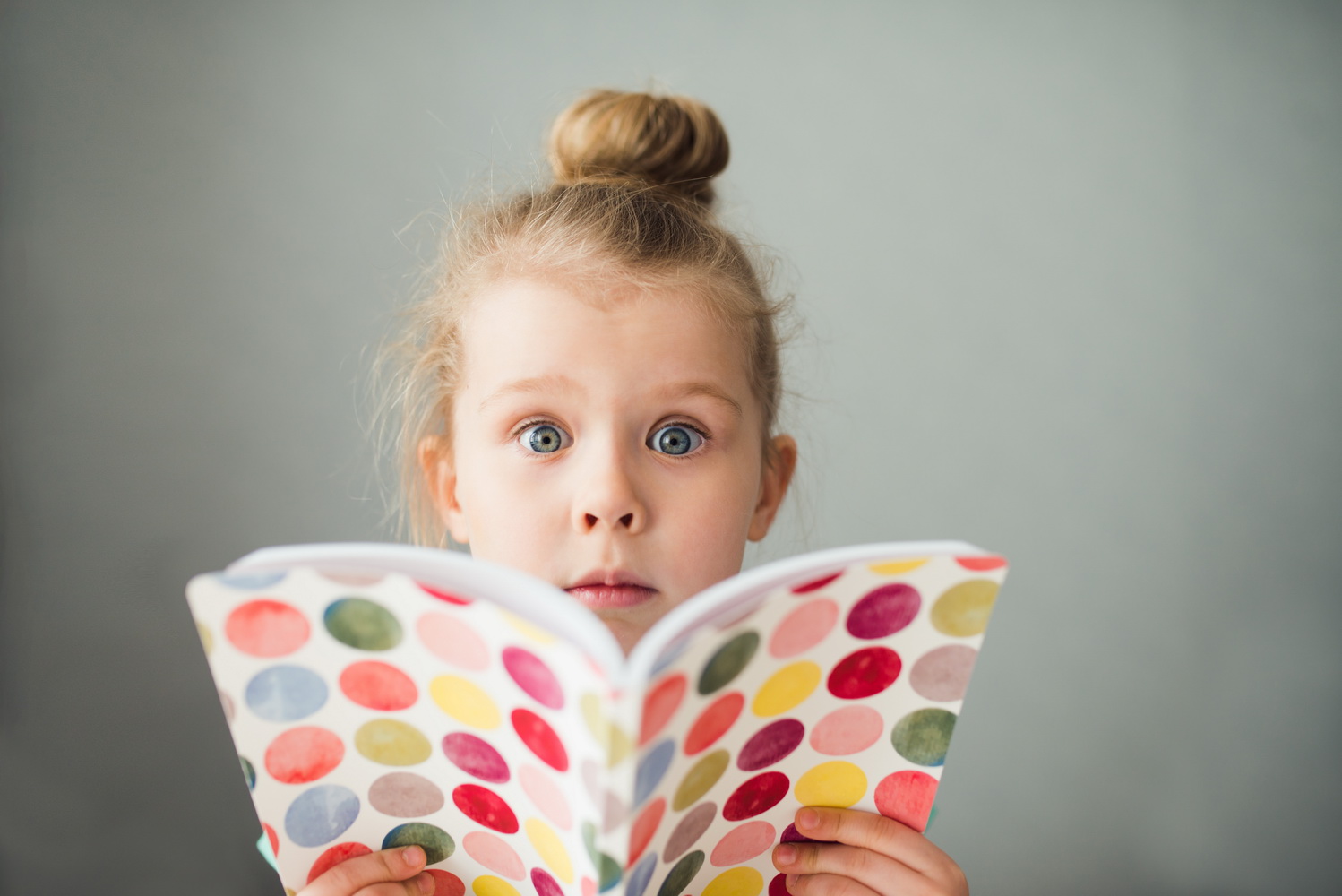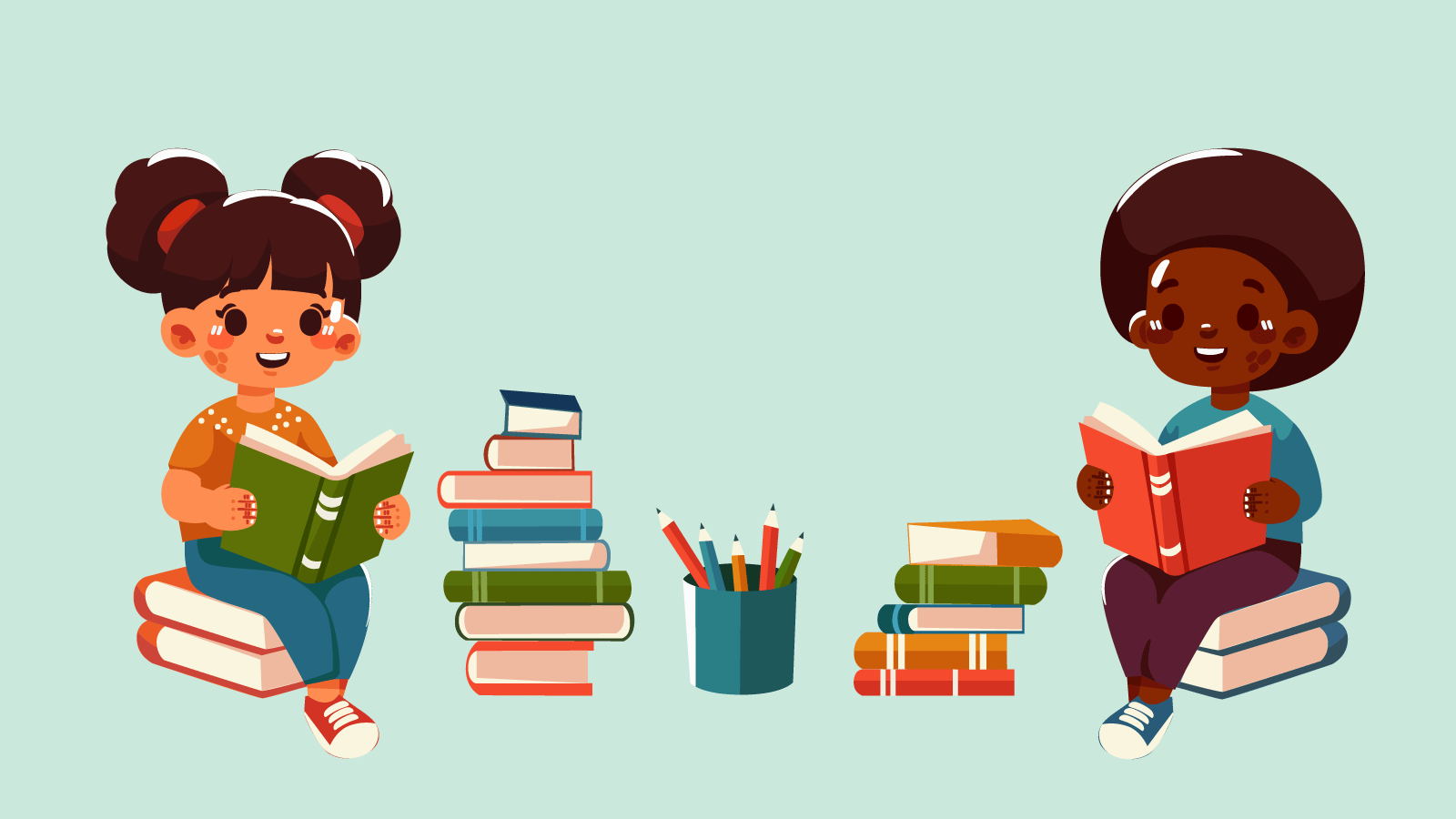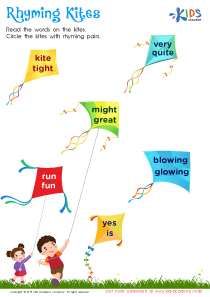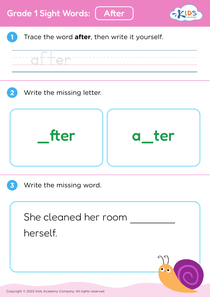Critical Thinking Grade 1 Reading Comprehension Worksheets
13 filtered results
-
From - To
Enhance your Grade 1 students' reading comprehension skills with our engaging Critical Thinking Worksheets! Designed specifically for young learners, these worksheets encourage students to analyze, evaluate, and interpret information from texts. By integrating critical thinking with reading, children develop a deeper understanding of stories while fostering essential cognitive skills. Each worksheet presents fun exercises and questions that stimulate curiosity and promote thoughtful discussions. Perfect for independent work or guided instruction, our resources support classroom learning and home practice alike. Help your students become confident readers who think critically and engage with the material in meaningful ways! Explore our collection today!


Point of View Worksheet
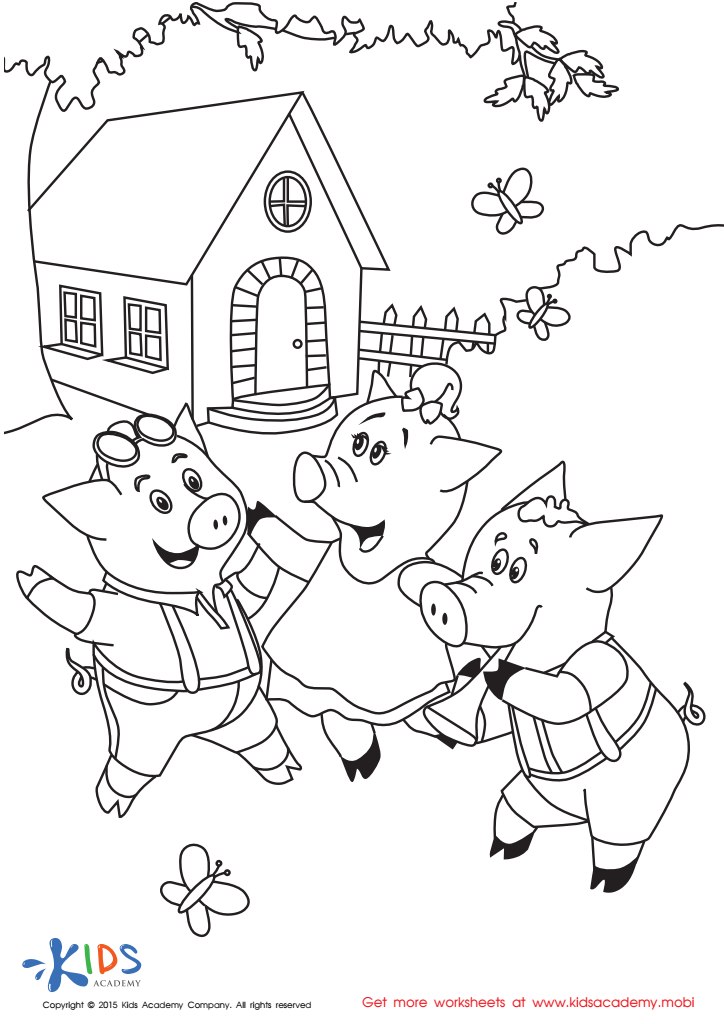

Folktales Printable PDF Worksheet: The 3 Little Pigs


The Summary of the Princess and the Pea Worksheet
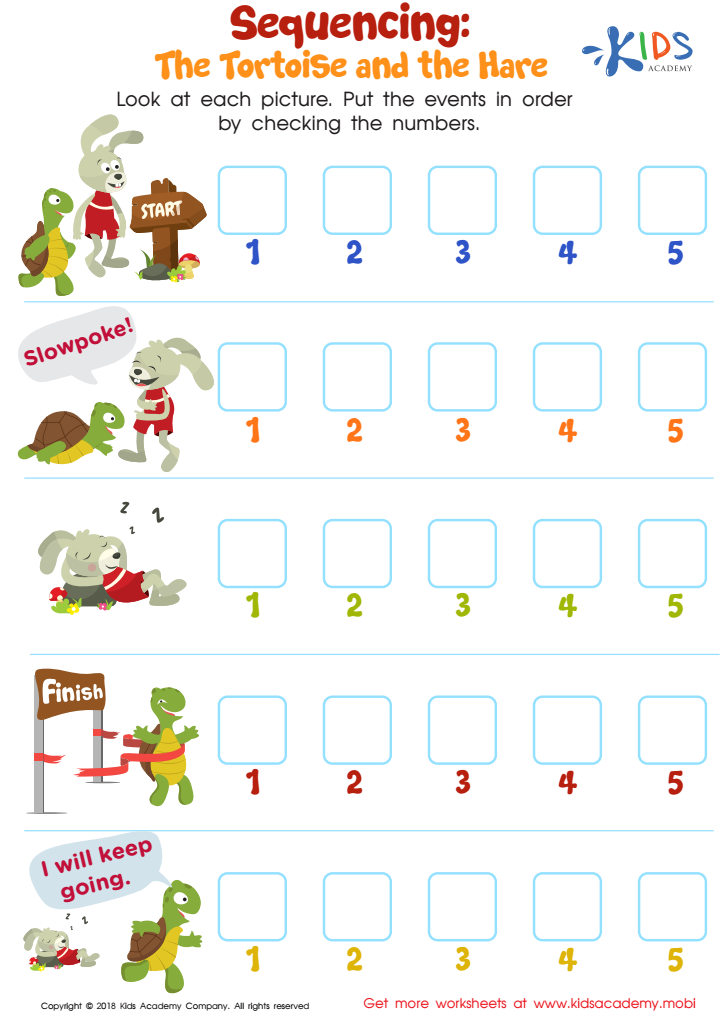

Sequencing: The Tortoise and the Hare Worksheet
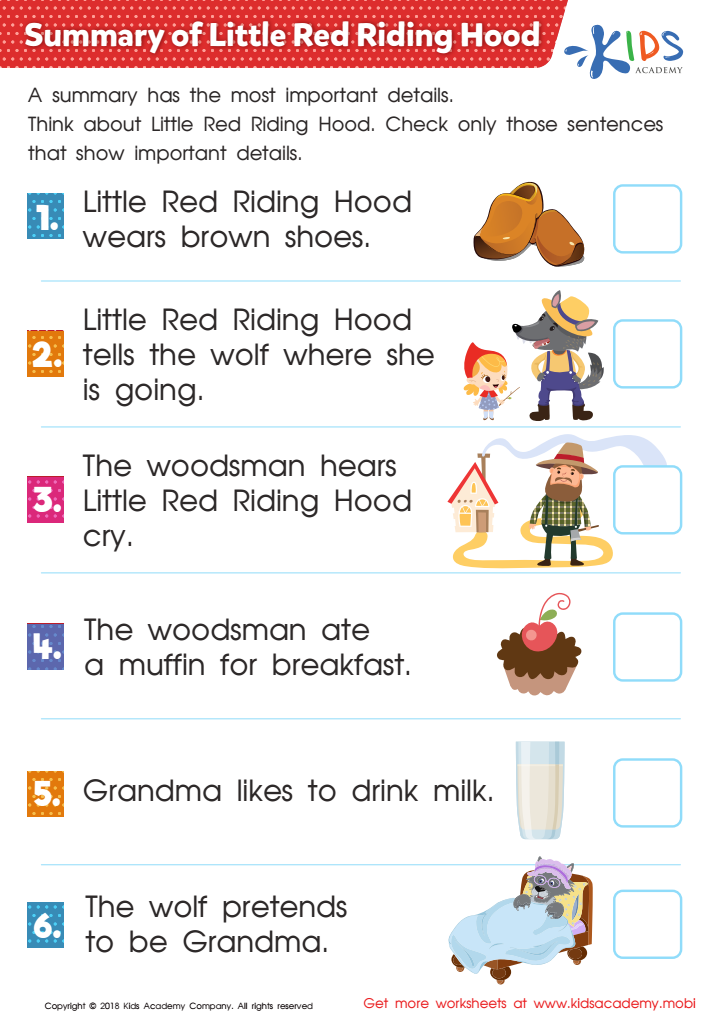

Summary of Little Red Riding Hood Worksheet
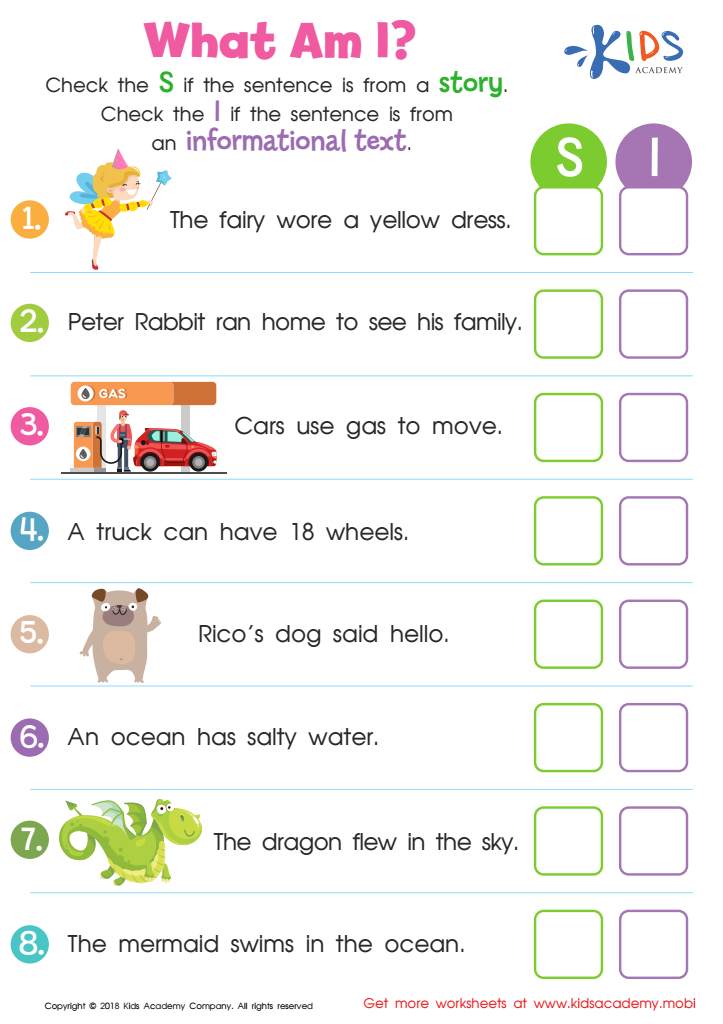

What Am I? Worksheet
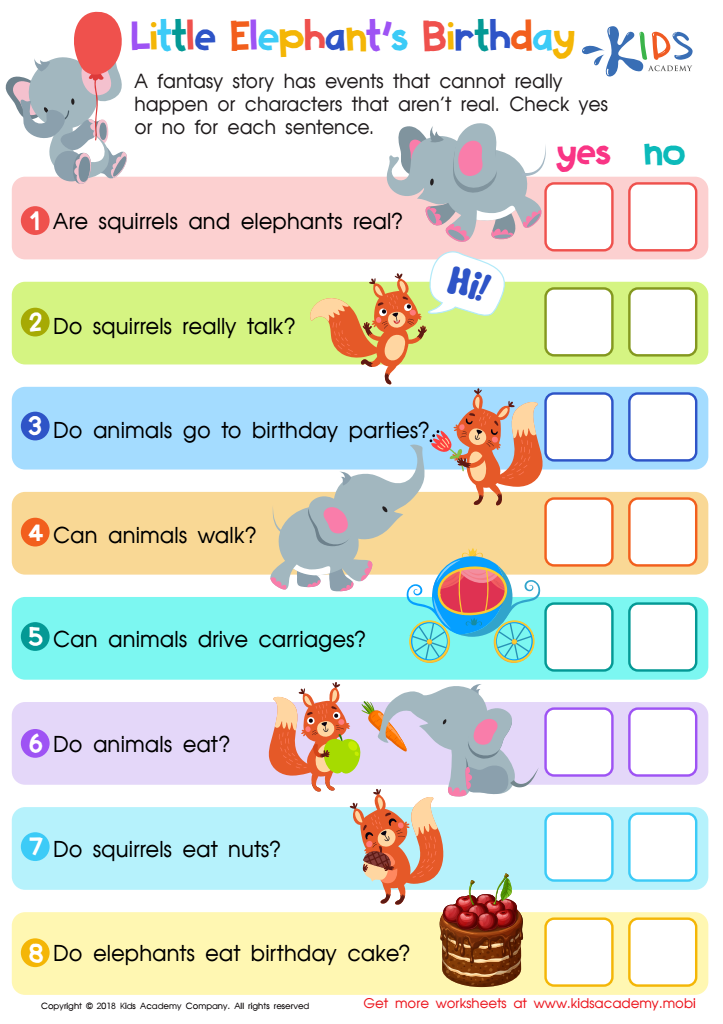

Little Elephant's Birthday Worksheet


The Boy Who Cried Fox Worksheet


Cinderella: Beginning, Middle and End Worksheet
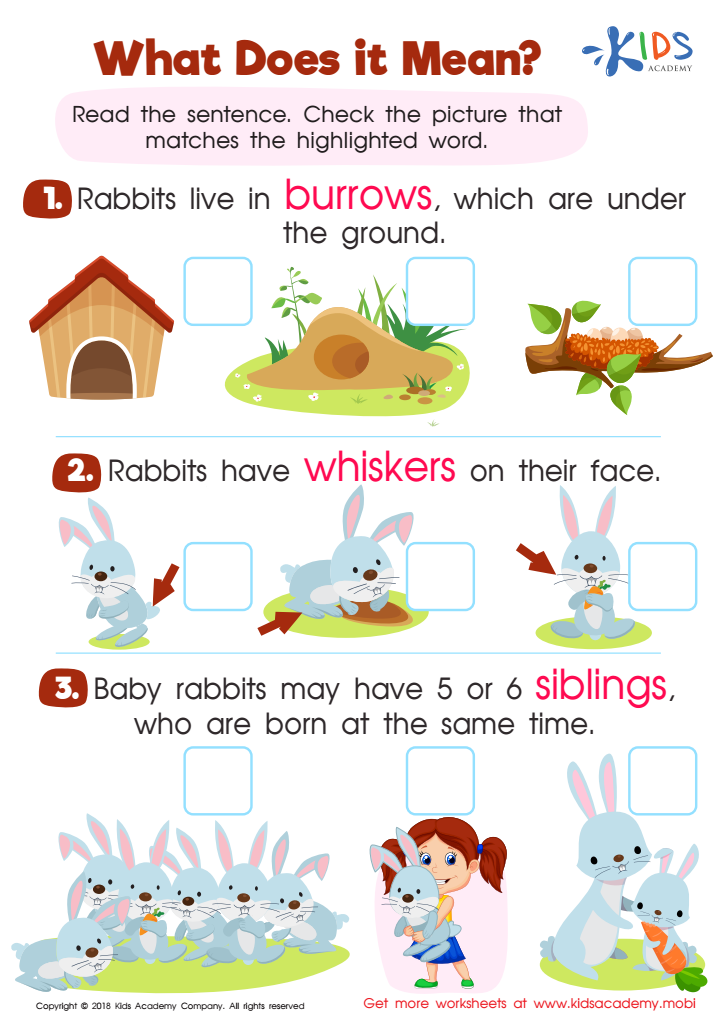

What Does It Mean? Worksheet
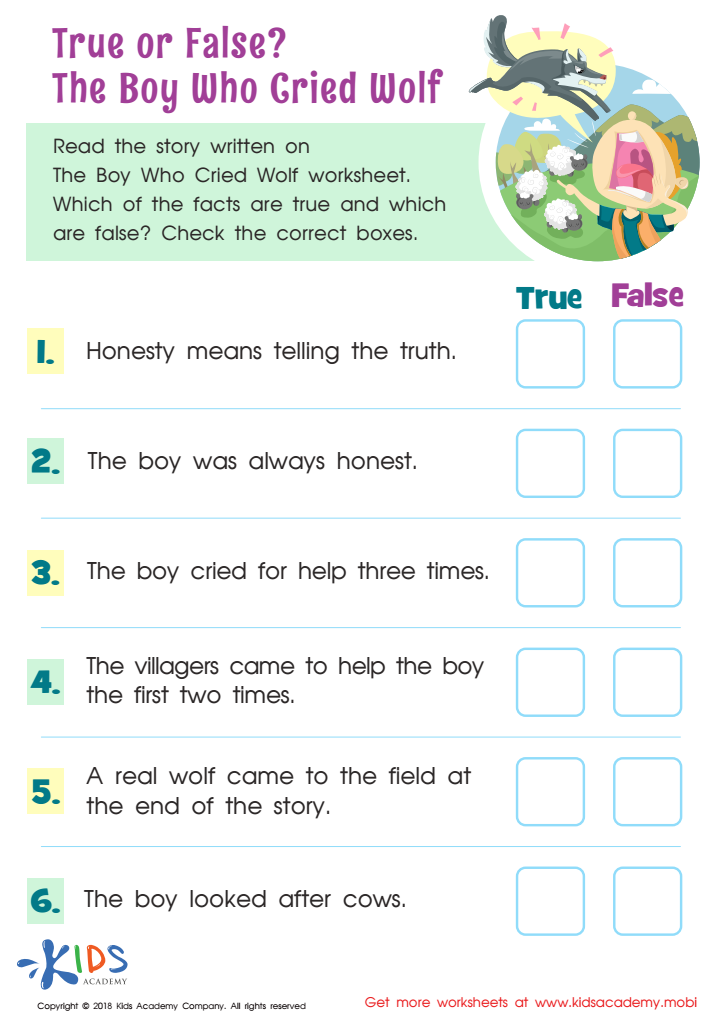

True or False? The Boy Who Cried Wolf Worksheet
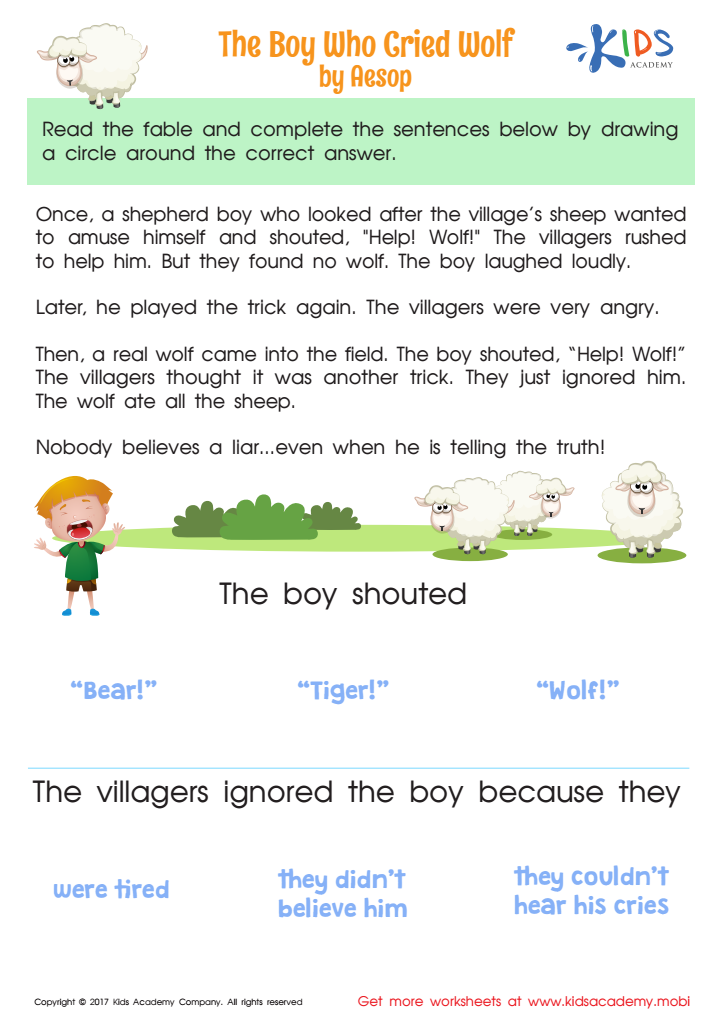

The Boy Who Cried Wolf Worksheet
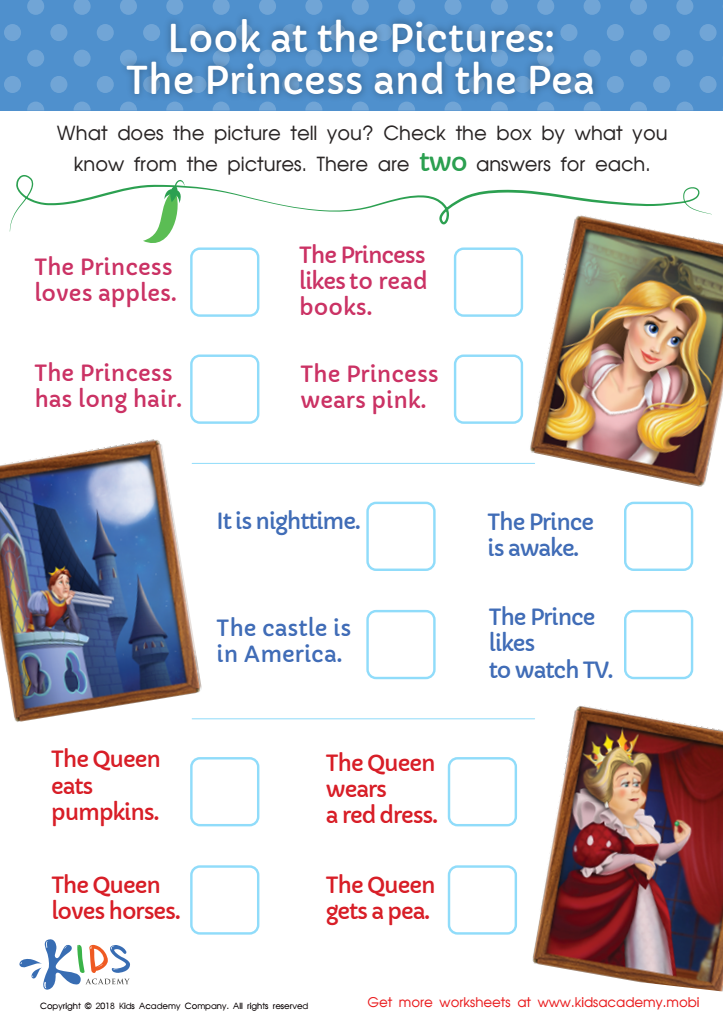

Look at the Pictures: The Princess and the Pea Worksheet
Critical thinking skills in reading comprehension for first graders are essential for fostering their overall cognitive development and lifelong learning. At this age, children are beginning to decode words and develop an understanding of stories, but reading involves more than just recognizing words; it requires the ability to analyze and interpret information. By encouraging critical thinking in reading activities, parents and teachers help students become active participants in their learning.
When children engage in critical thinking, they learn to ask questions about the text, make predictions, and draw connections to their own experiences. This boosts their comprehension and retention of the material, leading to more meaningful interactions with texts. Moreover, as young learners practice inferring deeper meanings and evaluating the narrative, they enhance their ability to reason and solve problems.
Additionally, cultivating these skills early on promotes a love for reading. When children realize that reading can be enjoyable and thought-provoking, they are more likely to develop a habit of reading regularly. For parents and teachers, fostering critical thinking in reading comprehension not only aids academic success but also nurtures curiosity, creativity, and a strong foundation for future intellectual endeavors.
 Assign to My Students
Assign to My Students









